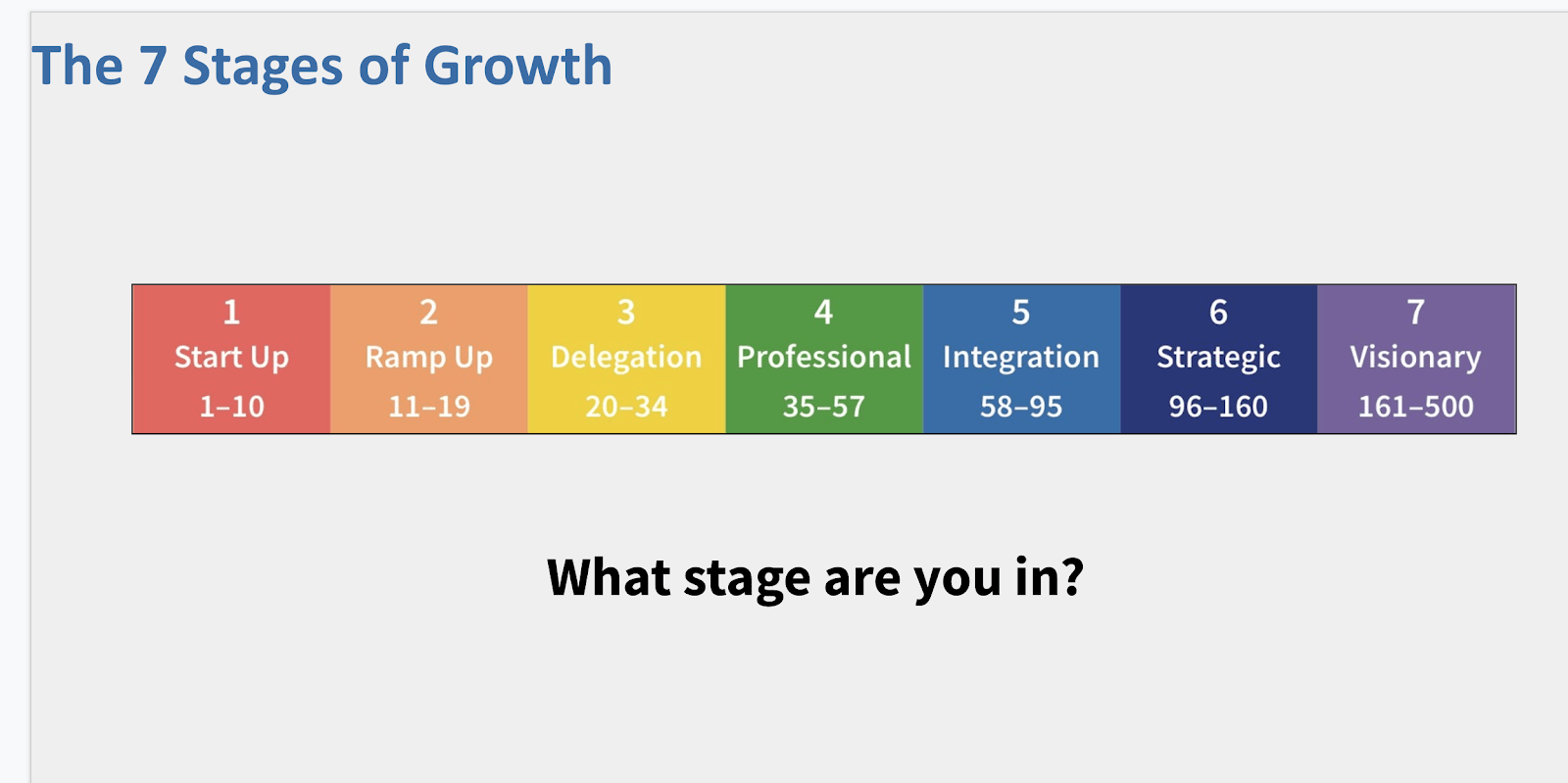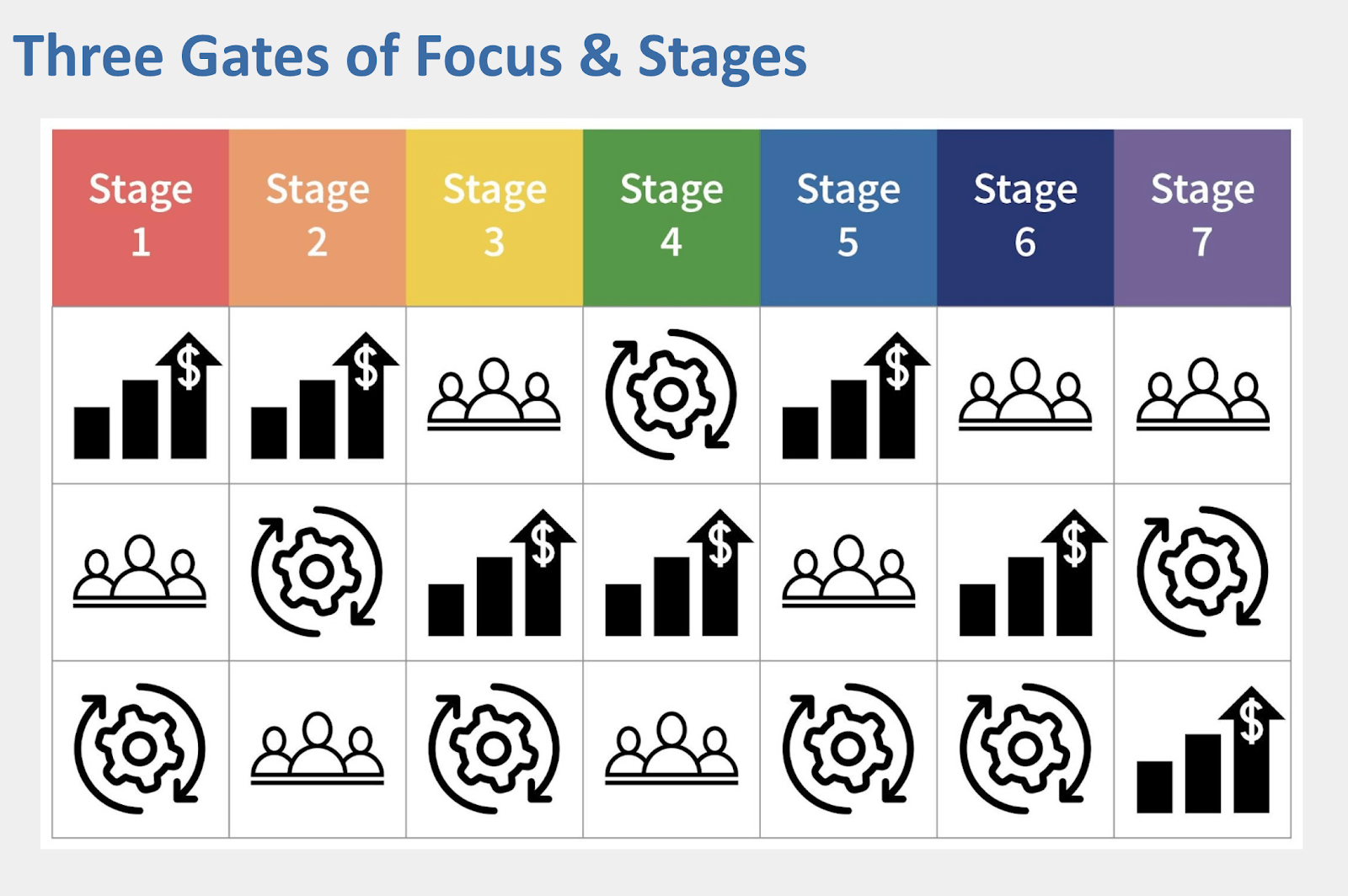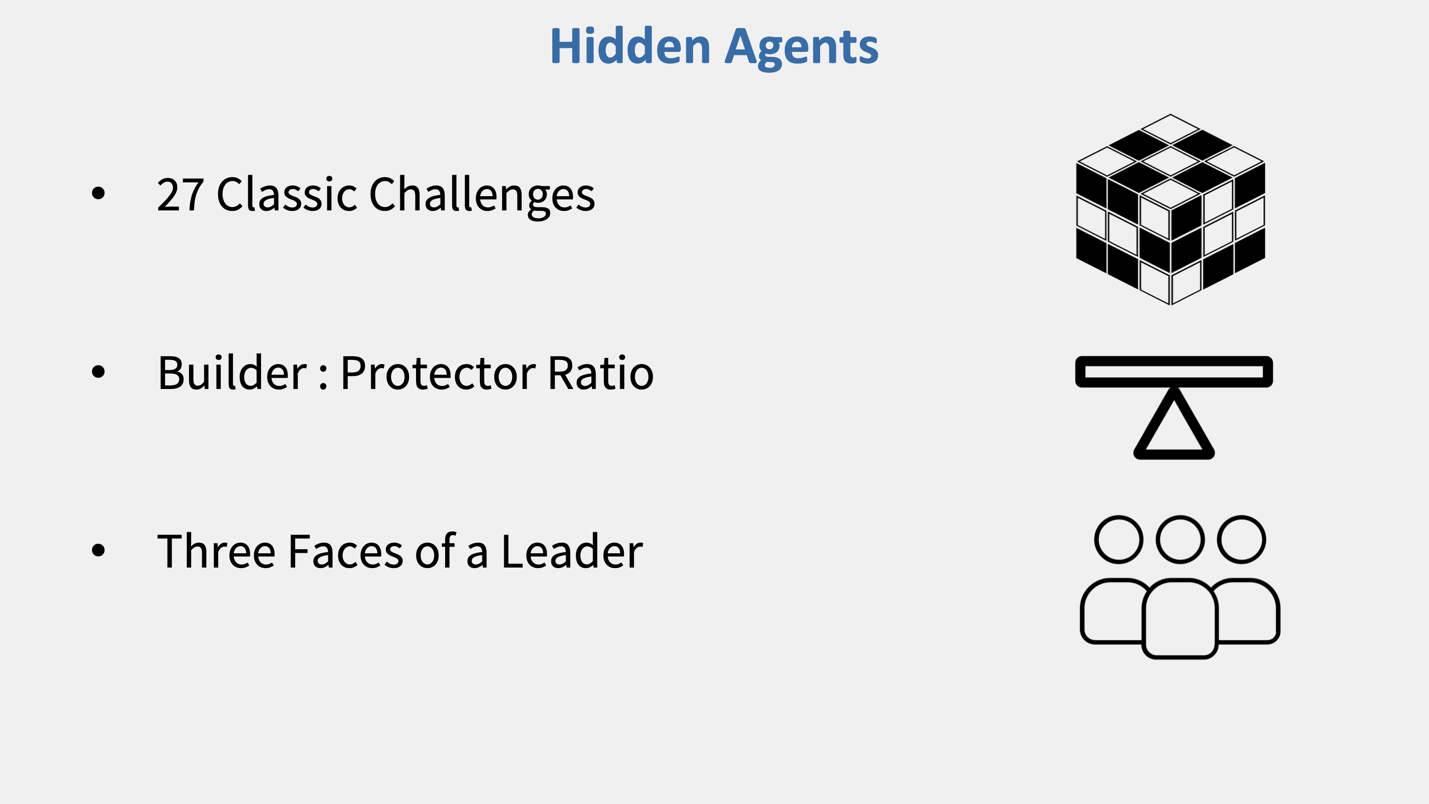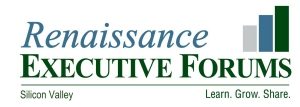7 Stages of Growth and 3 Gates of Focus (Pt 1 of 3, organization rewilding)
In February 2020, Executive Forum Silicon Valley (“EFSV”) members feasted on the insights and wisdom from the book “Navigating the Growth Curve” that helps understand and manage the increasing complexity at every level of growth. They each take back to their own organization the tools acquired at the Forum for engaging the people in their own company to deal with challenges at their particular stage of growth.
EFSV is a platform where business owners, CEOs and executives act as their fellow collaborators, co-inventors, partners and even “co-conspirators”, in getting clear picture of where they want to go, what stands in the way, and how to achieve their respective business growth goals. Forum members share resources, conduct self-assessment and identify opportunities. Upon getting clarity and insights, they hold each other accountable with support and encouragement.
Based on the research of over 650 successful companies with up to 500 employees, “Navigating the Growth Curve”, by James Fischer, describes a model for successful growth and identifies insights, behaviors, and focus areas that the leader needs to manage and balance.
People, Profit, Process “3 Ps” for Successful Growth Companies
Fischer found in his research that successful growth companies are light, agile and intelligent, and throw out the old model of “business as a machine”. These companies flourish by using the lens of the following “Three Gates of Focus” in addressing challenges as they arise:
- Growing people
- Growing profit and revenue
- Growing processes
Conversely, unsuccessful Companies often share these three traits:
- work environment without staff satisfaction
- lack of a sustainable profit model
- cannot understand, predict, and manage their growth
Understanding Where You and Your Company Are Today: The 7 Stages of Growth
You can identify your appropriate Stage of Growth from the graphic below. As shown a company’s Stage of Growth is directly proportional to the numbers of employees as that drives complexity into every phase of the business. As a company grows throughout the 7 stages, the complexity level of that company increases based on the most challenging aspect of managing any organization – people. Not profits, not processes – but people. The higher the number of people in a company, the more complexity.

A description of the what the company needs from the CEO, the typical priority challenges and the personnel balance needed, and the lenses of focus to keep a company growing in each Stage of Growth are as follows.
Stage 1 – Startup (1 – 10 employees)
- 3 Gates of Focus Priorities – Profit, People, Process
- 3 Faces of the Leader – 40 % Visionary, 10% Manager, 50 % Specialist
- Classic Challenges – Chaos, Inadequate Sales, Limited Capital to Grow
- Personnel Type Ratio – 4 Builders to 1 Protector
Stage 2 – Ramp Up (11 – 19 employees)
- 3 Gates of Focus Priorities – Profit, Process, People
- 3 Faces of the Leader – 40 % Visionary, 20 % Manager, 40 % Specialist
- Classic Challenges – Hiring Quality People, Inadequate Sales, Leadership – Staff Gaps
- Personnel Type Ratio – 3 Builders to 1 Protector
Stage 3 – Delegation (20 – 34 employees)
- 3 Gates of Focus Priorities – People, Profit, Process
- 3 Faces of the Leader – 10 % Visionary, 60 % Manager, 30 % Specialist
- Classic Challenges – Core Values Unclear, Culture Change Resistant, Lack of Staff Buy In
- Personnel Type Ratio – 1 Builders to 1 Protector
Stage 4 – Professional (35 – 57 employees)
- 3 Gates of Focus Priorities – Process, Profit, People
- 3 Faces of the Leader – 10 % Visionary, 70 % Manager, 20 % Specialist
- Classic Challenges – Diagnosing Problems, Employee Turnover, Lack of Systems
- Personnel Type Ratio – 3 Builders to 2 Protectors
Stage 5 – Integration (58 – 95 employees)
- 3 Gates of Focus Priorities – Profit, People, Process
- 3 Faces of the Leader – 30 % Visionary, 60 % Manager, 10 % Specialist
- Classic Challenges – Cost of Lost Expertise, Difficulty Diagnosing Problems, Inadequate Sales
- Personnel Type Ratio – 2 Builders to 1 Protector
Stage 6 – Strategic (96 – 160 employees)
- 3 Gates of Focus Priorities – People, Profit, Process
- 3 Faces of the Leader – 45 % Visionary, 50 % Manager, 5 % Specialist
- Classic Challenges – Hiring Quality People, New Staff Onboarding, Lack of Staff Buy-In
- Personnel Type Ratio – 3 Builders to 1 Protector
Stage 7 – Visionary (161 – 500 employees)
- 3 Gates of Focus Priorities – People, Process, Profit
- 3 Faces of the Leader – 75 % Visionary, 20 % Manager, 5 % Specialist
- Classic Challenges – Inadequate Profits, Changing Marketplace, Differentiating Products
- Personnel Type Ratio – 2 Builders to 1 Protector
There are four key messages associated with growth principles that a leader needs to understand as your company progresses from one stage to another:
Message 1 – Movement from stage to stage is not clear-cut. In business, there is no black and white, there is only gray. You don’t simply BECOME a Stage 2 company overnight. You begin to be a Stage 2 company as soon as you enter Stage 1. Preparation for the next stage begins as you enter the current stage.
Message 2 – What’s left undone from prior stages must be dealt-with. What you don’t get done in a specific stage of growth DOES NOT GO AWAY. -Not solving People, Process and Profits challenges during your current stage will simply put harder demands on you as a leader in the next stage of growth.
Message 3 – Length of time a business has been around can make a difference. Slower growth is usually easier to manage. Many companies choose to stay at a certain size (usually for the lower stages). They prefer to grow in other dimensions, not in employees. Simply assuming that you have “taken care of business” because you have been doing business as usual for some time isn’t the same thing as addressing your current stage challenges.
Messages 4 – If you are not growing, you’re dying. Stagnation will not allow you to be successful in an ever-changing competitive world. Something has to continue to grow and change for your organization to thrive. However, humans tend to gravitate toward a state of equilibrium because it is safe and understandable. But if we stay in that state too long it leads to slow decay and death, just like in nature.
More on the Three Gates of Focus: People, Profits, Process
Every issue found within a growing enterprise can be understood through one or more of these Three Gates. When looking for clarification with an issue, ask yourself: is it a Profit problem? People problem? or Process problem?
Then you can FOCUS on the right thing at the right time. To that end, the Three Gates of Focus shift priorities based on your stage of growth.
At the Executive Forum Silicon Valley, members first determine which of the Three Gates of Focus they most focus on today, by list and assessing priorities. Next, they compare with the following chart, “Three Gates of Focus and Stages”, to find the IDEAL Gates of Focus priorities to line up with each of their companies’ stage of growth. The members discussed how to get their focus back in alignment with their particular stage’s priority and identified a set of initiatives focused on each member’s key areas of concern.

The above Gates of Focus are always stacked in order of the most important focus for that particular stage of growth. For example, Stage 1, the Profit Gate is the primary focus, with the next focus being the People Gate and the last is the Process Gate.
Different stages of growth require different types of focus. Once you’ve identified your own stage of growth, the model below helps you do the right things at the right time by shifting among these three key focuses: people, profits and process.
In Part 2 and Part 3 of this blog, we will discuss the Hidden Agents that can hinder and hold back your growth. Three Faces of a Leader, the Builder Protector Ratio, the Classic Challenges will be discussed as well as how to “Rewild” your business to get it back onto a high growth trajectory.

================================================================
At EFSV, selected business owners and leaders work together to gain clarity, insight and accountability to ignite their leadership engines, grow their businesses and improve their lives. If you are interested in learning more about the Stages of Growth or becoming a member at Executive Forum Silicon Valley, please contact gperkins@executiveforums.com or call 408-901-0321. For more information visit https://execforumssv.com/


Comments